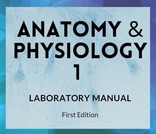
Laboratory manual for undergraduate Anatomy & Physiology 1
- Subject:
- Anatomy/Physiology
- Biology
- Health, Medicine and Nursing
- Material Type:
- Activity/Lab
- Reading
- Teaching/Learning Strategy
- Textbook
- Author:
- Julie Robinson
- Date Added:
- 06/05/2021

Laboratory manual for undergraduate Anatomy & Physiology 1
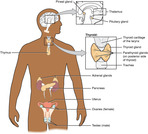
These course modules are meant to accompany the OpenStax Anatomy & Physiology textbook. Included within each subunit are both Articulate Rise 360 exported raw Web and SCORM 1.2 ZIP files. These files are to be Imported into a Learning Management System. Each module contains text and images from the OpenStax book, original text, openly licensed images from various sources, formative activities, and links to videos on public websites. The modules are free to use as needed. If modification is desired, please contact the author, and I will send you the Rise 360 source file.
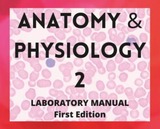
Laboratory manual for undergraduate Anatomy & Physiology 2

Teaching and learning resources for A&P 2. Please check back as I intend to add more.

This lesson deals with how cells obtain the energy to carry out life processes. You will review the process of cellular respiration taught in biology. In addition we will discuss the four major classes of molecules found in cells. These are; lipids, carbohydrates, proteins, and enzymes. The topic of cellular respiration and biological molecules will be discussed again in Anatomy 302 when you learn about Digestion and Nutrition.
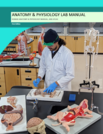
This anatomy & physiology lab manual is meant for a two semester course, covering every system of the human body. It contains lecture notes, labs, videos, and the online version has added activities and games.
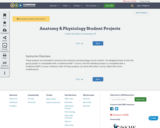
These projects are intended to enhance the anatomy and physiology course content. I've designed these so that the group project is coimpatible with a traditional A&P 1 course, and the individual project is compatible with a traditional A&P 2 course. However, both of these projects can work with either course, albeit with minor modifications.
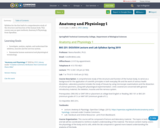
Syllabus for the first half of a comprehensive study of the structure and function of the human body. This course uses an open textbook, Anatomy & Physiology, from OpenStax.
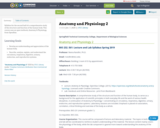
Syllabus for the second half of a comprehensive study of the structure and function of the human body. This course uses an open textbook, Anatomy & Physiology, from OpenStax.
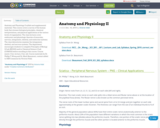
Anatomy and Physiology II syllabi and supplemental materials. This course covers a survey of the human body that stresses biological principles, chemical interpretations, and physical applications at the various levels of organization. The class lectures cover embryonic and physiologic theories of muscular, nervous, integument, skeletal, and endocrine systems. The class laboratories examine the integument, skeletal, and nervous systems. The department encourages students to complete Principles of Biology II/Lab (BIO102) and/or Chemical Science I/Lab (CHM110) before enrolling in this course. Course meets: 3 hrs. lecture; 3 hrs. lab. Course materials by Dr. Phillip T. Wong and Dr. Mark Beaumont, content added to OER Commons by Victoria Vidal.
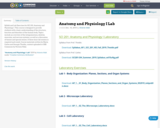
Syllabi and Lab Exercises for SCI 201: Anatomy and Physiology I. This course is designed to provide students with a basic understanding of the structure, function and disorders of the human body. Topics include an overview of the integumentary, skeletal, muscular, and nervous systems, as well as a discussion of tissues and special senses. A three-hour lab session is required each week. Course materials written by Maria Carles and Georgia Thoidis, content uploaded to OER Commons by Victoria Vidal.
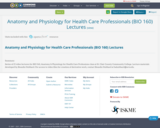
Series of 21 video lectures for BIO 160, Anatomy & Physiology for Health Care Professions class at St. Clair County Community College. Lecture materials developed by Brandis Hubbard. For access to video files for creation of derivative work, contact Brandis Hubbard at bahubbard@sc4.edu.
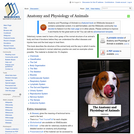
Veterinary nurses need to have a firm grasp of the normal structure of an animal’s body and how it functions before they can understand the effect diseases and injuries have and the best ways to treat them. This book describes the structure of the animal body and the way in which it works. Animals encountered in normal veterinary practice are used as examples where possible.

This is a lesson that can be used to teach beginning Introduction to Agriculture students about the types of drugs we administer to animals. Students then get to complete a hands-on lab activity where they learn about and demonstrate four types of injections.
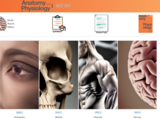
This is a full Common Course Cartridge shell for BIO 201 Anatomy & Physiology I.Updated July 2023: Updated the labs and added homework from OpenStax Assignable.
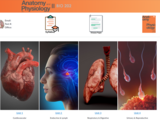
This is a full Canvas course shell for BIO 201 Anatomy & Physiology II.Updated July 2023: Labs have been updated and Homework was added using OpenStax Assignable.
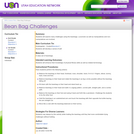
In this lesson students will explore many challenges using beanbags. Locomotor as well as manipulatives and non-manipulatives are involved. Students will enhance their knowledge of physical fitness skills as well as related terminology.
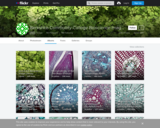
BCC Bioscience Image Library is a media file repository of images and video clips made available to educators and students in the biological sciences. The resources are created by faculty, staff and students of Berkshire Community College and are licensed under Creative Commons 0. This means all content is free, with no restrictions on how the material may be used, reused, adapted or modified for any purposes, without restriction under copyright or database law.
This project was partially funded by a $20,000,000 grant awarded by the U.S. Department of Labor’s Employment and Training Administration, Grant # TC-26450-14-60-A-25. The product was created by the grantee and does not necessarily reflect the official position of the U.S. Department of Labor. The U.S. Department of Labor makes no guarantees, warranties, or assurances of any kind, express or implied, with respect to such information, including any information on linked sites and including, but not limited to, accuracy of the information or its completeness, timeliness, usefulness, adequacy, continued availability, or ownership.
If you have any questions contact professor Faye Reynolds at: freynold@berkshirecc.edu
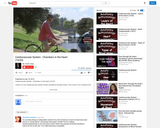
We continue our study of the cardiovascular system by examining the chambers of the heart.
The concepts covered in this video include:
-Right Atrium
-Right Ventricle
-Left Atrium
-Left Ventricle
Lesson 3 in our Cardiovascular System (Heart and Blood Vessels) series. This is part of our Anatomy and Physiology lecture series.
If this video helps you please be sure to LST -like subscribe and tell your friends. Your support helps us make more videos. For the complete series please visit http://mrfordsclass.net/
Blood Videos
-Introduction to Blood (13:01): http://youtu.be/-Y5U49E-CM4
-Composition of Blood (13:02): http://youtu.be/YHCIMKZ0zrg
-Hematopoiesis-Making Blood (13:03): http://youtu.be/sibrcrXHJGI
-Red Blood Cells (13:04): http://youtu.be/19_6kUCVYfk
Heart and Blood Vessels Videos
-Heart Fundamentals (14:01): http://youtu.be/Y335KJ-EuDw
-Layers of the Heart (14:02): http://youtu.be/8PlwFTwJRMQ
-Chambers in the Heart (14:03): http://youtu.be/SdNQtPzUfHg
-Introduction to Blood Vessels (14:08): http://youtu.be/GVs8cd6jv94
-Types of Blood Vessels (14:09): http://youtu.be/_jkQR8v-bAg
-Movement of Blood (14:11): http://youtu.be/x9dH5TpKntk

We take a look at the basic composition of blood. Blood is composed of liquids and solids. The solids are called the formed elements while the liquid portion is called plasma. The solids of the blood consists of red blood cells, white blood cells and platelets . The plasma is mostly water, but it does contain some plasma proteins, dissolved gases, nutrients and electrolytes.
Lesson 2 in our Cardiovascular System (Blood) series. This is part of our Anatomy and Physiology lecture series.
If this video helps you please be sure to LST -like subscribe and tell your friends. Your support helps us make more videos. For the complete series please visit http://mrfordsclass.net/
Blood Videos
-Introduction to Blood (13:01): http://youtu.be/-Y5U49E-CM4
-Composition of Blood (13:02): http://youtu.be/YHCIMKZ0zrg
-Hematopoiesis-Making Blood (13:03): http://youtu.be/sibrcrXHJGI
-Red Blood Cells (13:04): http://youtu.be/19_6kUCVYfk
Heart and Blood Vessels Videos
-Heart Fundamentals (14:01): http://youtu.be/Y335KJ-EuDw
-Layers of the Heart (14:02): http://youtu.be/8PlwFTwJRMQ
-Chambers in the Heart (14:03): http://youtu.be/SdNQtPzUfHg
-Introduction to Blood Vessels (14:08): http://youtu.be/GVs8cd6jv94
-Types of Blood Vessels (14:09): http://youtu.be/_jkQR8v-bAg
-Movement of Blood (14:11): http://youtu.be/x9dH5TpKntk